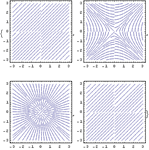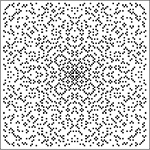| More about Mathematica » |
Mathematica 7 adds the capability for instant parallel computing. On any multicore computer system, Mathematica 7 is automatically set up to be able to run multiple parts of a computation concurrently—and for the first time makes parallel computing easy enough that it can be used in seconds as a routine part of everyday work. The symbolic character of the Mathematica language allows unprecedentedly straightforward support of many existing and new parallel programming paradigms and data-sharing models—and Mathematica's parallel infrastructure is set up to allow seamless scaling to networks, clusters, grids and clouds.
- Multicore parallelism standard with zero configuration on all versions of Mathematica. »
- Parallelize function for automatic parallelization of Mathematica code. »
- Automatic parallel versions of iteration and functional operations. »
- ParallelTry function for speculative parallelization. »
- Flexible data parallelism functions built directly into the Mathematica language.
- Broadcast functions for separate evaluation on multiple subkernels. »
- Automatic and tunable division of computations for parallel load balancing. »
- Built-in concurrency primitives for full control of concurrent computations. »
- Shared memory capabilities for symbols and functions. »
- High-level synchronization with critical section support. »
- Automatic and manual subkernel management. »
- High-level mechanisms for distributing definitions to subkernels. »
- In-notebook display of concurrent process status. »
- Full user interface for manual configuration of parallel architecture. »
- Parallel debugging and profiling through Wolfram Workbench.
- Built-in support for parallelism on homogeneous and heterogeneous networks and clusters. (Requires gridMathematica.)
- Built-in support for the Wolfram Lightweight Grid System for ad hoc parallel networks.
- Built-in support for Microsoft, Sun, LSF, PBS, etc. cluster management systems.










